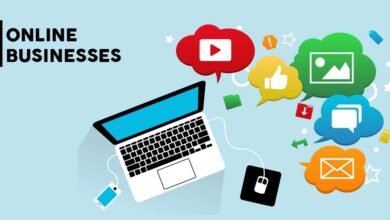Business Casual Dress Men: Stylish and Comfortable Outfits for Every Occasion

Business casual attire has become an essential element in modern workplaces, providing men with an opportunity to showcase both professionalism and personal style. This dress code allows flexibility, blending elements of traditional office wear with the ease of casual clothing. The beauty of business casual lies in its adaptability—it can be dressed up for important meetings or toned down for more laid-back days at the office. Whether it’s pairing chinos with a button-down shirt or wearing a blazer over a polo, the options are endless, offering a variety of combinations that cater to different tastes and occasions.
Mastering the business casual dress code comes down to choosing the right clothing items that strike the perfect balance between comfort and sophistication. Key pieces include tailored pants, blazers, collared shirts, and loafers—each versatile enough to create multiple outfits. Men can also experiment with accessories like belts, watches, or scarves to elevate their look while keeping it work-appropriate. The goal is to exude confidence and professionalism while ensuring comfort and practicality throughout the workday. In the following sections, we’ll provide more ideas for effortlessly incorporating business casual attire into your wardrobe.
Read More: Business casual attire has become an essential element in modern workplaces
What is Business Casual for Men?
Business casual is a dress code that blends professional elements with more relaxed pieces, creating an approachable yet polished look. The term “business casual” can vary slightly depending on the workplace culture, but in general, it refers to outfits that are less formal than a traditional suit and tie, but still maintain a professional appearance. For men, this often means wearing slacks or chinos paired with button-down shirts, polos, or sweaters, and accessorizing with belts and leather shoes.
In many corporate settings, business casual dress allows for greater personal expression while still maintaining a professional appearance. Depending on the workplace, jeans may even be considered acceptable as long as they are paired with the right top and accessories.
Balance of Professional and Casual
Business casual attire strikes a perfect balance between formal office wear and the more relaxed style of casual clothing. It allows individuals to look polished while staying comfortable throughout the workday. The key to business casual is maintaining a professional appearance without the need for a full suit. This flexibility makes it a versatile choice for most modern workplaces. It is important to find the right mix of pieces that align with both your style and your office environment.
Chinos and Slacks
Chinos or slacks are the preferred alternative to formal trousers in a business casual setting. These options offer a less rigid feel while still maintaining a sharp, structured look. They can be paired with various shirts to create a variety of outfits that are suitable for different occasions. The fabric and cut of chinos or slacks can vary, offering both comfort and style. Choosing a neutral color like navy, grey, or beige makes it easier to match with different tops.
Button-Down Shirts and Polos
Button-down shirts are a classic choice for business casual, offering a clean and neat look. A well-fitted button-down shirt can be paired with chinos or slacks for a polished outfit. Alternatively, a polo shirt provides a slightly more relaxed yet still professional appearance. Both options are breathable and comfortable, making them suitable for long workdays. Additionally, they can be layered with sweaters or blazers to adjust for varying temperatures and settings.
Sweaters for Comfort
Sweaters and cardigans are excellent additions to a business casual wardrobe, adding both warmth and style. They can be layered over shirts or worn on their own to create a more relaxed look without losing professionalism. Opting for lightweight wool or cotton sweaters ensures comfort throughout the day. Turtlenecks or crewneck designs can add a sophisticated touch when paired with chinos. Sweaters offer a good way to add texture and color to your outfit, enhancing your overall business casual look.
Tailored Fit
A tailored fit is crucial for business casual attire to ensure a sharp, professional appearance. Clothing that is too loose or too tight can undermine the polished look that business casual aims for. Opting for well-fitted slacks, shirts, and blazers is important for creating an elegant yet comfortable silhouette. Tailored clothing not only helps improve the overall look but also boosts confidence. Make sure your clothing accommodates movement and allows comfort, especially during long work hours.
Footwear Matters
Footwear plays a significant role in business casual outfits, as it can elevate or downgrade the entire look. Leather shoes, loafers, and dress boots are ideal choices for business casual attire, offering both comfort and style. Some workplaces may allow high-quality sneakers, but they should be sleek and minimalistic, avoiding athletic styles. A good pair of shoes enhances the polished and professional nature of your outfit. Consider matching the color and material of your shoes to your belt and other accessories for a cohesive look.
Jeans in Certain Settings
Dark jeans, when styled properly, can be an acceptable part of business casual attire in more relaxed corporate environments. The jeans must be well-fitted and free from excessive wear or distressing. Pairing jeans with a crisp button-down shirt or a well-structured blazer can make them look polished. Some companies allow jeans on casual Fridays or for specific events, but it’s best to check your office’s specific dress code. When choosing jeans, make sure they align with the overall professional tone of your workplace.
Blazers for Polished Look
A blazer or sports coat is a great way to take a business casual outfit from simple to sophisticated. When paired with chinos or slacks, a blazer can create a more polished, elevated appearance suitable for client meetings or business lunches. A well-fitted blazer adds structure to your look, providing a sharp and confident appearance. You can opt for a lighter fabric for warmer seasons or heavier wool blends for colder weather. Blazers allow you to maintain a professional look without going full formal, giving you the versatility to adapt your outfit.
Personal Style with Professionalism
While business casual attire allows for more personal style expression, it’s essential to remain professional. Subtle colors, classic patterns, and simple accessories allow room for individuality while still adhering to workplace standards. Choose pieces that complement your personal preferences, but avoid overly trendy or flashy items. This balance between personal style and professionalism helps you feel confident while ensuring you stay workplace-appropriate. Expressing yourself through colors or accessories can add a refreshing element to your business casual wardrobe.
Accessories to Complete the Look
Accessories are a great way to finish off your business casual look and add personality to your outfit. A quality leather belt is a staple, tying the whole outfit together. Watches, cufflinks, or a briefcase can provide additional sophistication and polish. Keep accessories minimal and classic to avoid drawing attention away from the main elements of your outfit. Well-chosen accessories can highlight your attention to detail and elevate even the simplest business casual outfits, making them stand out in a professional setting.
Business Casual Essentials for Men
To build a perfect business casual wardrobe, it’s essential to focus on key pieces that balance style, comfort, and professionalism. These pieces should offer versatility, allowing you to mix and match them for various occasions, from the office to client meetings or casual Fridays. Key essentials include well-fitted shirts (button-downs or polos), tailored trousers or chinos in neutral colors, lightweight sweaters for layering, structured blazers for a polished look, and leather shoes like loafers or brogues. Additionally, accessories such as belts and watches can elevate the overall appearance. Here is the table with essential items to consider for a business casual wardrobe
Essentials for Men
| Item | Description | Example Styles | Colors/Patterns | Occasions |
| Shirts | Button-down shirts, polos, or casual shirts without patterns | Fitted button-downs, classic polos | Plain colors, subtle checks | Everyday office wear, business meetings |
| Trousers/Chinos | Well-tailored pants in neutral colors like beige, navy, or grey | Slim fit chinos, dress trousers | Beige, navy, grey | Office, casual Fridays, client meetings |
| Sweaters | Lightweight knit sweaters or cardigans | V-neck, crew neck designs | Neutral shades, subtle patterns | Layering for warmth, casual settings |
| Blazers | Optional jackets that add structure to the outfit | Tailored or unstructured blazers | Solid colors, like navy or grey | Client meetings, formal events |
| Shoes | Leather loafers, brogues, or dress sneakers | Brown leather loafers, black dress sneakers | Brown, black leather | Everyday wear, office, business events |
Business Casual Outfits for Different Occasions
Business casual outfits for men are versatile and adaptable, making them ideal for a wide range of events and occasions. Whether you’re attending an important client meeting or just working from the office, understanding how to style your outfit for the occasion is key. Let’s break it down for different situations.
Client Meeting or Business Event
For a more professional business casual look during meetings or events, you may want to opt for a crisp button-down shirt, a pair of slim chinos, and leather shoes. Adding a blazer or tailored jacket can elevate the outfit and create a more sophisticated look. Choose neutral colors like navy, grey, or black for a timeless and sharp appearance.
Casual Office Environment
In a more relaxed office setting, you can go for a smart polo shirt paired with chinos or dress trousers. A pair of comfortable loafers or dress sneakers will complete the look without compromising professionalism. Feel free to experiment with patterns, but keep it subtle—avoid overly flashy designs or bright neon colors.
After-work socials or Casual Fridays
On casual Fridays or for after-work events, you can loosen up a bit. Jeans (preferably dark and slim fit) combined with a button-down shirt or casual blazer can give you a comfortable yet polished look. Leather sneakers or loafers work well for this type of event.
Building a Business Casual Wardrobe: What You Need
Creating a wardrobe that fits the business casual dress code is about balance. You’ll want to invest in high-quality staples that can be paired with various pieces, making your outfit versatile for both professional settings and casual outings. Below are the types of clothing items and accessories that form the foundation of a solid business casual wardrobe.
- Shirts: A well-fitted button-down shirt is a classic business casual staple. A variety of colors like white, light blue, or pastel shades will ensure your wardrobe is versatile and suitable for most occasions. For a more relaxed vibe, a polo shirt or a henley shirt can be incorporated. Always ensure that the shirt fits properly—too tight or too loose can detract from the overall professional appearance.
- Pants: Chinos are a favorite choice when it comes to business casual pants. Their clean and structured fit makes them appropriate for most office settings. Opt for neutral colors like navy, khaki, or grey, which can easily be paired with a variety of shirts and jackets. If chinos feel too formal, a high-quality pair of jeans in a dark wash can still fall under business casual, depending on the environment.
- Footwear: The right footwear is essential to completing your business casual outfit. Leather loafers, oxford shoes, and brogues are all classic choices that lend a refined touch to your look. For a more relaxed office setting, dress sneakers or suede loafers can work as well. Make sure your shoes are clean and polished to maintain a professional appearance.
- Blazers and Outerwear: While not always necessary, a blazer or sport coat can take your business casual attire to the next level. A tailored blazer adds structure and sophistication, perfect for meetings or networking events. For colder weather, a smart coat or trench coat in neutral tones can add style without compromising your professional look.
- Accessories: To complete your business casual outfit, accessorize with a quality belt, watch, and perhaps a subtle tie (if required). Keep accessories minimal to maintain a clean and professional look. A simple leather belt can complement your shoes and tie the outfit together, while a classic watch can add a refined touch.
How to Mix and Match Business Casual Pieces
When putting together a business casual look, it’s all about creating a balance between formal and informal elements. By following a few simple guidelines, you can easily mix and match different pieces to create stylish outfits suitable for any occasion.
Pair Formal Tops with Casual Bottoms
A great way to mix business and casual styles is to pair formal tops with casual bottoms. For example, wear a well-fitted button-down shirt with dark jeans or chinos. This combination balances the formal appearance of the shirt with the relaxed vibe of the jeans, creating a versatile and comfortable outfit.
Add a Tailored Blazer for Structure
A blazer adds structure and sophistication to a more relaxed outfit. You can wear a casual polo with a tailored blazer, or add a blazer to a button-down shirt and chinos combination for a professional yet comfortable look. This creates the ideal mix of style and ease.
Keep Footwear Simple and Stylish
Your shoes can make or break your outfit. To keep your look polished, choose clean, simple leather shoes or loafers. For more relaxed settings, go for dress sneakers, but avoid overly casual options like flip-flops or running shoes.
Stick to Neutral Colors for Flexibility
Neutral colors such as navy, beige, black, and grey are perfect for business casual attire because they can be mixed and matched easily. These shades provide flexibility and allow you to create different outfits without having to buy too many clothes. Adding pops of color with accessories or shirts can also make your outfit stand out without feeling too casual.
Top Business Casual Trends for Men
The business casual dress code continues to evolve, and in 2025, we see a blend of comfort, style, and practicality. Key trends include relaxed fits in trousers and chinos, with an emphasis on breathable, sustainable fabrics. Layering has become more popular, with lightweight jackets and unstructured blazers making appearances. Tech-infused fabrics that offer wrinkle resistance and moisture-wicking properties are gaining traction. Footwear trends now include sleek dress sneakers, offering comfort without compromising style. In addition, bold accessories like statement watches and minimalist belts are becoming more common. These trends allow men to maintain a polished look while embracing modern comfort.
Relaxed Fits
While slim and tailored cuts are still popular, many men are opting for more relaxed fits in their business casual wardrobe. Looser trousers and oversized shirts can create a more comfortable and laid-back look, while still maintaining a sharp appearance.
Monochromatic Outfits
Monochromatic outfits—where the entire outfit is made from different shades of the same color—are becoming increasingly popular. This trend gives a clean and coordinated look that is modern and stylish.
Casual Footwear
Dress sneakers and loafers are making their way into the business casual world. Sleek, minimalist designs in neutral colors pair well with chinos or jeans, giving your look a fresh, youthful vibe.
Statement Accessories
Subtle accessories such as a stylish watch or a distinctive belt are gaining popularity. These pieces can personalize your business casual look without being too loud or distracting.
Wrapping Up
Business casual attire for men strikes the perfect balance between professionalism and comfort, making it an ideal choice for modern work environments and events. By focusing on the right fit, fabric, and color combinations, men can create versatile looks that remain stylish and appropriate for various occasions. Whether you’re heading to the office, attending a business meeting, or participating in a casual company event, mastering the art of business casual dressing allows for flexibility while still maintaining a polished and confident image.
As workplace dress codes continue to evolve, business casual attire offers an excellent opportunity to express personal style without compromising professionalism. With these simple guidelines, men can easily build a wardrobe that meets the demands of both style and comfort, ensuring they’re always ready to make a great impression, no matter the occasion.
FAQs
What distinguishes a casual dress code from a business casual?
Business casual allows for a relaxed but polished look, combining professional and comfortable clothing such as chinos, polos, and button-down shirts. The casual dress code, on the other hand, permits more laid-back clothing like jeans, t-shirts, and sneakers, often lacking the structured look required in business casual settings.
Can I wear jeans as part of a business casual outfit?
Yes, dark jeans in a slim or straight fit can be considered business casual when paired with a more formal shirt and leather shoes. Avoid distressed or ripped jeans, as they may appear too casual for a business setting.
Which shoe styles go well with business casual clothing?
Leather loafers, oxford shoes, dress sneakers, and brogues are all excellent choices for business casual attire. Avoid sneakers that are too sporty or casual, and make sure your shoes are clean and polished.
Is a tie required for business casual?
Generally, ties are not required for business casual attire. However, depending on the workplace or event, you may choose to add a tie for extra professionalism. Opt for a subtle, slim tie if needed.
Are polos acceptable for business casual wear?
Yes, polos are widely accepted in business casual settings. Choose a well-fitted, high-quality polo in neutral colors for a sharp, yet relaxed look.
What is the best way to style a business casual outfit for a meeting?
For a meeting, pair a button-down shirt with slim chinos and leather shoes. Adding a blazer or sports coat can elevate the look and make you appear more polished without being too formal.
Can I wear a sweater as part of a business casual outfit?
Yes, lightweight sweaters or cardigans are a great addition to business casual attire. A V-neck or crew-neck sweater paired with chinos or trousers can create a stylish, professional look.




